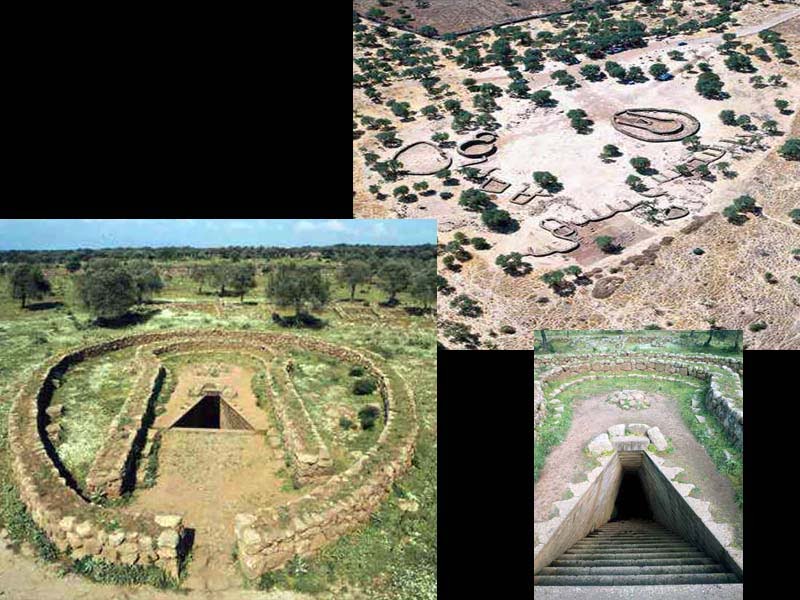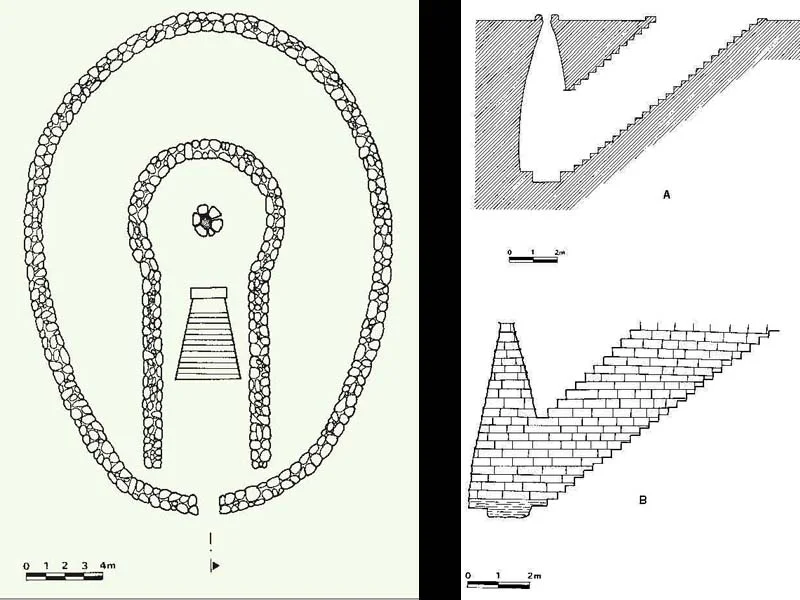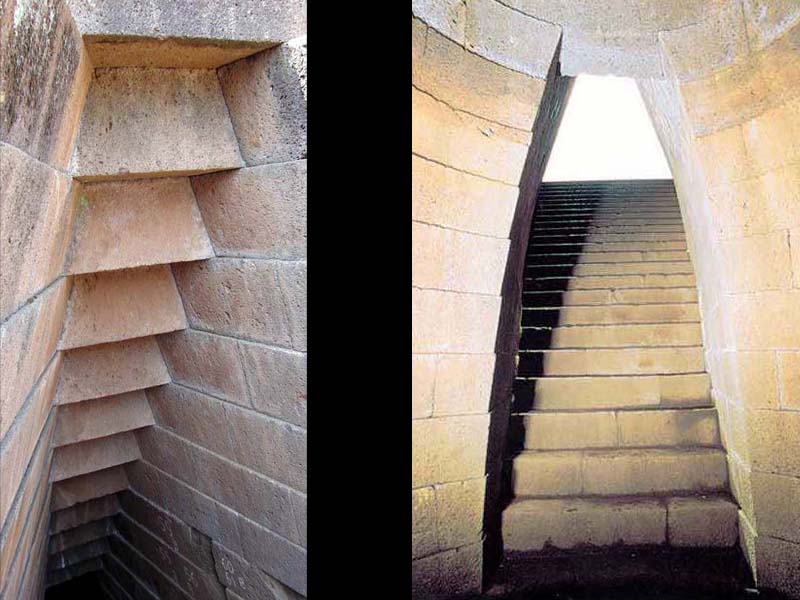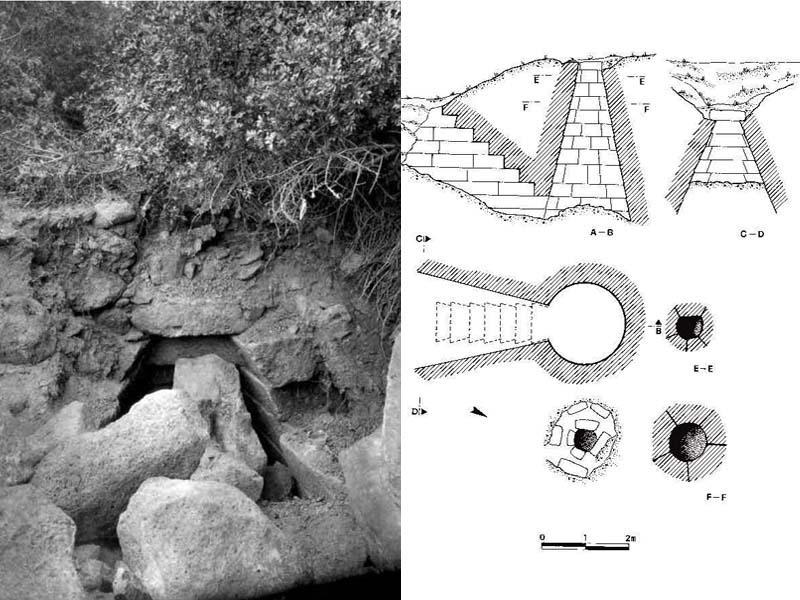It is a monument of complex interpretation, datable to the 25th century BC, belonging to the typology of sacred wells. The structure is placed inside a nuragic site that extends for about one hectare, located in the surroundings of Paulilatino. In addition to the well, the archaeological complex has a nuraghe, a meeting hut with enclosure, tabernae, and other huts. The well is structured as follows: atrium or vestibule and staircase that descends into the underground chamber where the water source is located, surmounted by a tholos vault built with concentric rings. The perimeter of the superficial part, called temenos (sacred enclosure), develops with a shape that in archaeological terms is defined as "key lock", while the trapezoidal stairwell, made up of 6 basalt steps, arranged in rows of isodomic ashlars, descends to a depth of XNUMX and a half meters and has an inverted staircase in the upper part. This element creates a suggestive effect which reappears, as a play of light and shadow, in the projection of the upside-down shadow during the equinoxes.
The construction technique with isodomic ashlars, typical of the Final Bronze Age, providing for blocks of stone of equal height but arranged in staggered rows, offers an interesting visual effect.
During the excavations the following findings were made: four Phoenician bronze statuettes, two fibulae, some clay anthropomorphic figures. In the area annexed to the well, numerous figured terracottas, necklace beads and glass paste balsam jars were found.
According to the historian of religions Vittorio Lanternari, the well represents a unique typology of its kind and demonstrates the cult of water on the island. Its cultic function is demonstrated by the extreme complexity of the architecture of the wells, which cannot be explained with purely practical reasons. Even my colleague Raffaele Pettazzoni, in his essay dedicated to the religiosity of the ancient Sardinian populations, speaks of the importance of the cults linked to water in Sardinia, referring to the well of Santa Cristina.
Lebeuf studied the architectural characteristics linked to the observation of celestial phenomena, in particular the lunar movements. According to the scholar, thanks to the particular arrangement of the back ashlars, the monument would have served, among other things, to predict lunar eclipses. It should be noted that every 18,61 years the moon is reflected on the surface of the water at the bottom of the well, reaching its maximum height on the occasion of the lunistice.
During the equinoxes of September and March, the sun, aligned with the stairway, perfectly illuminates the bottom of the well. The structure was therefore linked to both solar and lunar phenomena, a fact that allows us to hypothesize related cults.





Historical notes
The first news regarding the sacred well dates back to the mid-nineteenth century and is due to scholars such as La Marmora (in 1840), Angius (in 1846) and Spano (in 1857). Excavations for the recovery and restoration of the structure began in 1953 by Enrico Atzeni.
CARD
LATEST PUBLISHED TEXTS
VISIT THE FACTSHEETS BY OBJECT

